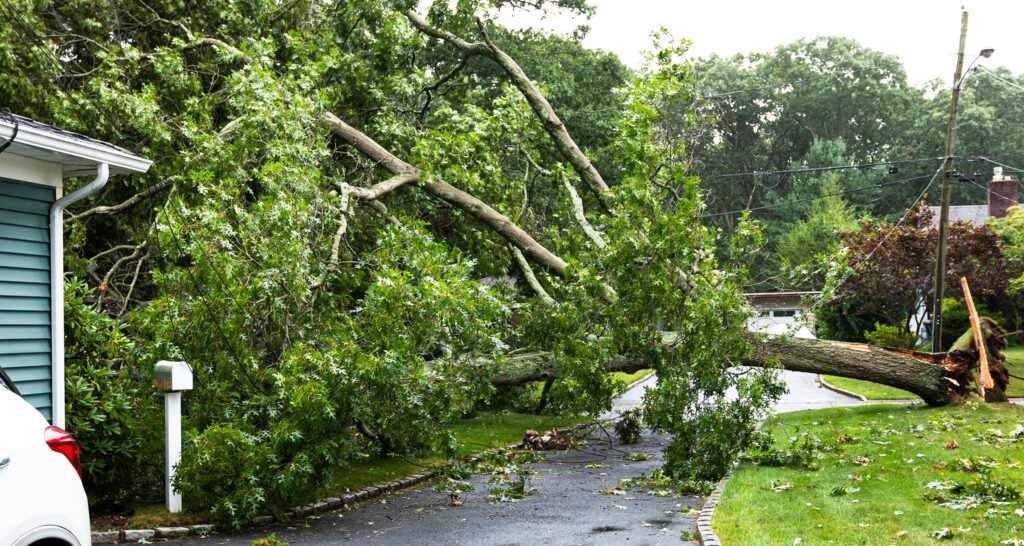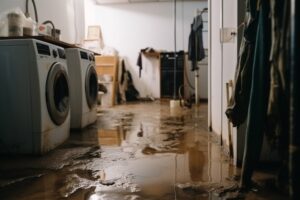Swing Sets, Trampolines & Liability: What Homeowners Need to Know...
Read More
Protecting Your Home: The Importance of Homeowners Insurance for Storm Damage in the Era of Climate Change
June 14, 2024
Understanding Homeowners Insurance for Storm Damage
Key Components of Storm Damage Coverage:
- Dwelling Coverage: Protects the structure of your home, including the roof, walls, and foundation.
- Personal Property Coverage: Covers your belongs, such as furniture, electronics, and clothing, if they are damaged or destroyed by a covered event.
- Additional Living Expenses (ALE): Pays for temporary living costs if your home is uninhabitable due to storm damage.
- Liability Protection: Provides financial protection if someone is injured on your property during a storm.
The Impact of Climate Change on Storm Frequency and Intensity
- Increased Storm Frequency: Warmer global temperatures contribute to more frequent storms, including hurricanes, tornadoes, and severe thunderstorms.
- Greater Storm Intensity: Climate change can lead to more intense storms, with stronger winds and heavier rainfall, resulting in greater potential for damage.
- Rising Sea Levels: Coastal areas are particularly vulnerable as rising sea levels increase the risk of storm surges and flooding.
Ensuring Adequate Coverage in a Changing Climate
Given the evolving risks, it’s vital to ensure your homeowners insurance policy provides adequate protection. Here are some tips to help you stay prepared:
- Review and Update Your Policy: Regularly review your insurance policy to ensure it reflects the current value of your home and belongings. Update your coverage limits as needed to account for any improvements or additions to your property.
- Consider Flood Insurance: Standard homeowners insurance policies typically do not cover flood damage. If you live in a flood-prone area, consider purchasing a separate flood insurance policy through the National Flood Insurance Program (NFIP) or a private insurer.
- Understand Exclusions and Limitations: Be aware of any exclusions or limitations in your policy, such as specific types of storm damage that may not be covered. Discuss these with your insurance agent and consider adding endorsements or riders to fill any gaps.
- Invest in Mitigation Measures: Implementing storm-resistant features, such as impact-resistant windows, reinforced roofing, and proper drainage systems, can reduce the potential for damage and may qualify you for premium discounts.
- Document Your Belongings: Maintain an up-to-date inventory of your personal property, including photos and receipts. This documentation can expedite the claims process if you need to file a claim for storm damage.
The Role of Insurers in Addressing Climate Risks
- Incorporating Climate Data: Utilizing advanced climate models to better assess and price risks associated with severe weather events.
- Promoting Resilience: Offering incentives for homeowners who take proactive steps to mitigate storm damage, such as installing storm shutters or elevating their homes in flood-prone areas.
- Expanding Coverage Options: Developing new insurance products that specifically address emerging risks, such as coverage for microburst wind events or urban flash flooding.
As climate change continues to influence weather patterns, the importance of comprehensive homeowners insurance for storm damage cannot be overstated. By staying informed about the risks, regularly updating your policy, and taking proactive measures to protect your home, you can ensure that you are prepared for whatever Mother Nature may bring. Investing in the right coverage not only provides peace of mind but also safeguards your most valuable asset—your home.
If you have any questions about your homeowners insurance policy or need assistance in evaluating your coverage, don’t hesitate to reach out to Sablich Insurance Group. We can provide personalized advice and help you navigate the complexities of storm damage insurance in the age of climate change.
Sablich Insurance Group is licensed in both Pennsylvania and New Jersey.In Memory, In Action: Sablich Insurance Group’s Commitment to Melanoma Awareness
In Memory, In Action: Sablich Insurance Group’s Commitment to Melanoma...
Read MoreFlood Insurance in Pennsylvania and New Jersey: What Homeowners Need to Know
Flood Insurance in Pennsylvania and New Jersey: What Homeowners Need...
Read MoreContact
-
300 Brookside Avenue
Building 4, Suite 125
Ambler, PA 19002 - 215.402.7021
- info@sablichinsurance.com
Site Map
Follow Us
in Pennsylvania and New Jersey



